
Key Dates
- Friday 24th May = all landscape + Anthropocene images must be added to print folder ready for print order
- Half Term
- Friday 14th June = final deadline for Landscape / Anthropocene Project (includes display of work)
FINAL PRINTS
You must edit and save / export a range of images for printing to the PRINT FOLDER found here
M:\Radio\Departments\Photography\Students\Image Transfer\Yr 12 ANTHROPOCENE and landscape 2024
- Natural Landscape Photos 1-3 images
- Urban + industrial Photos 1-3 images
- Anthropocene 1-3 images
Remember to include a range of sizes
A3 / A4 / A5 and black and white images too
Go to bottom of this blogpost to follow instructions on how to size and save images for printing from Lightroom and/or Photoshop.
ANTHROPOCENE
This unit will help you explore further opportunities with your landscape photography. We will spend time looking closely at this and discussing ideas with you…
- What is Anthropocene?
- How and why are photographers exploring this concept?
- Use your skills and knowledge to date to tackle and approach this theme. ie: abstract, portraiture, identity, landscape, studio based photography etc. – YOU DECIDE!
The Anthropocene defines Earth’s most recent geologic time period as being human-influenced, or anthropogenic, based on overwhelming global evidence that atmospheric, geologic, hydrologic, biospheric and other earth system processes are now altered by humans.
The word combines the root “anthropo”, meaning “human” with the root “-cene”, the standard suffix for “epoch” in geologic time.
What are the 4 causes of the Anthropocene?
Signs of the Anthropocene
Agriculture, urbanisation, deforestation and pollution have caused extraordinary changes on Earth.
Consequences of the Anthropocene
These human actions cause, among other consequences, changes in the water cycle, imbalances and destructions in the marine and terrestrial ecosystems, the increase of extreme meteorological phenomena, the acidification of the oceans or the disappearance of the forests.
DISCUSS
Now watch this and discuss / compare the way in which various photographers have responded to this theme…
Blog Posts to make : CHECKLIST
- Define “Anthropocene” and explain what it is.
2. Add a mindmap and moodboard of images, ideas and trigger points on your chosen genre ie: portraiture, studio (object or portraiture), abstract, landscape etc. You should aim to include a range of data, statistics, information, maps, documents, policies, pledges etc at this point to show a wide range of research methods and justification…
3. Choose two photographers that you feel explore Anthropocene through your chosen genre of photography that interest you and create a CASE STUDY on both and then compare them using a writing structure to help you. https://hautlieucreative.co.uk/photo22al/2020/08/21/the-formal-elements/
(These photographers should directly influence your final outcomes )
Make sure you describe in detail:
- Why have you chosen this artist?
- What interests you about their work?
- How does the work relate to the theme of Anthropocene?
- What are you going to do as a response to their work?
4. Organise and carry out your photo-shoots !!! You MUST complete a minimum of 2 PHOTO-SHOOTS (100-200 photos) . Responding to the theme of Anthropocene in your chosen genre.
5. Edit, select and develop your photographs and post contact sheets.
6. Produce a comparative analysis between one of your photographs and an image of one of your chosen photographers – discuss similarities and differences.

7. Develop your ideas through your images by editing, making decisions, reviewing and refining – selecting your collection of images or image as your final response to Anthropocene.
Your final outcome could be an image, a collection of images, an altered landscape, a small zine, an exhibition in a virtual gallery, a projected image etc.
8. Ensure your write an evaluation that comments on your original intentions (what you set out to do) and how your realised those intentions. Is your outcome successful? Comment on strengths and successes.
Task : Constructed Seascapes
Take a look at these photographic images (click on each image to expand):
GUSTAVE LE GRAY – THE GREAT WAVE, 1857. ALBUMEN PRINT FROM COLLODION-ON-GLASS NEGATIVE.
- Both could be described as landscape pictures. What kinds of landscapes do they describe?
- What similarities do you notice about these two pictures?
- What differences do you notice?
- What words/phrases best describe each of these landscapes?
- In which of these landscapes would you prefer to live?
A bit of research…
Read the following descriptions about the making of these images:
| Gustave Le Gray – The Great Wave, 1857 | Dafna Talmor – from Constructed Landscapes II |
| ‘The Great Wave’, the most dramatic of his seascapes, combines Le Gray’s technical mastery with expressive grandeur […] At the horizon, the clouds are cut off where they meet the sea. This indicates the join between two separate negatives […]Most photographers found it impossible to achieve proper exposure for both landscape and sky in a single picture. This usually meant sacrificing the sky, which was then over-exposed. Le Gray’s innovation was to print some of the seascapes from two separate negatives – one exposed for the sea, the other for the sky – on a single sheet of paper. | This ongoing body of work consists of staged landscapes made of collaged and montaged colour negatives shot across different locations, merged and transformed through the act of slicing and splicing […] ‘Constructed Landscapes’ references early Pictorialist processes of combination printing as well as Modernist experiments with film […] the work also engages with contemporary discourses on manipulation, the analogue/digital divide and the effects these have on photography’s status. |

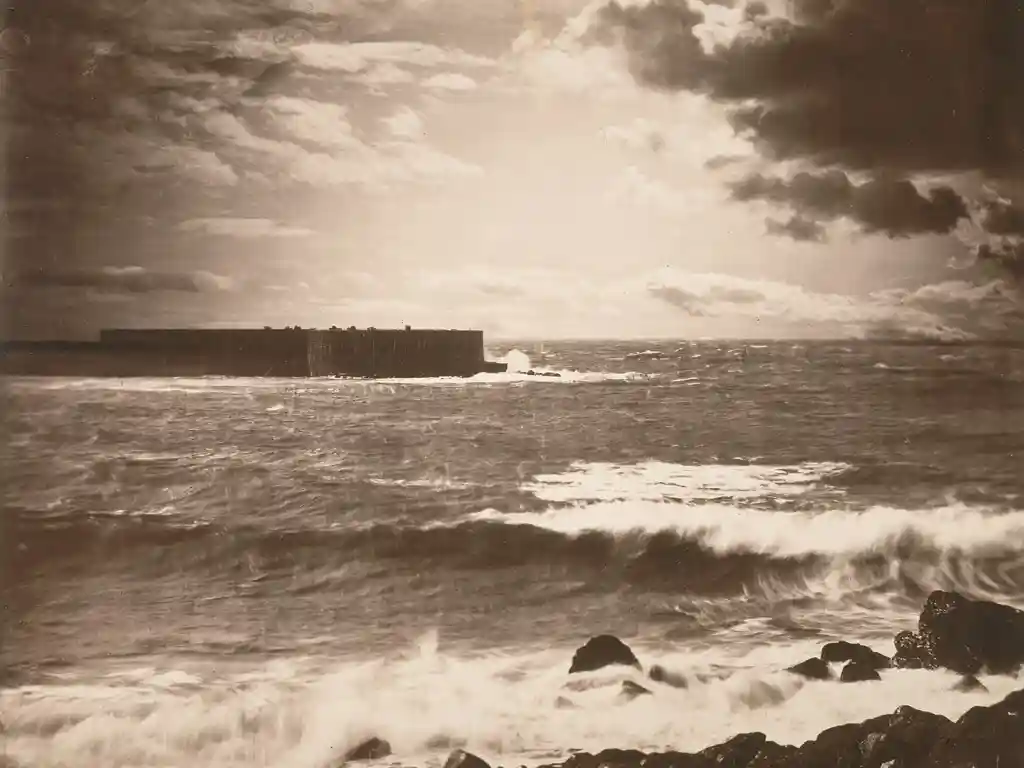
Illustration: Gustave le Gray
Combination printing, creating seascapes by using one negative for the water and one negative for the sky at a time where it was impossible to have at the same time the sky and the sea on a picture due to the too extreme luminosity range. Combination printing was an early experiment of HDR photography where you expose for bright and dark areas of a landscape scene.
Contemporary approaches to views of horizons between sky and sea, see inspiration from Japanese photographer Hiroshi Sugimoto whose monochrome images are minimalist and spiritual in their expression.
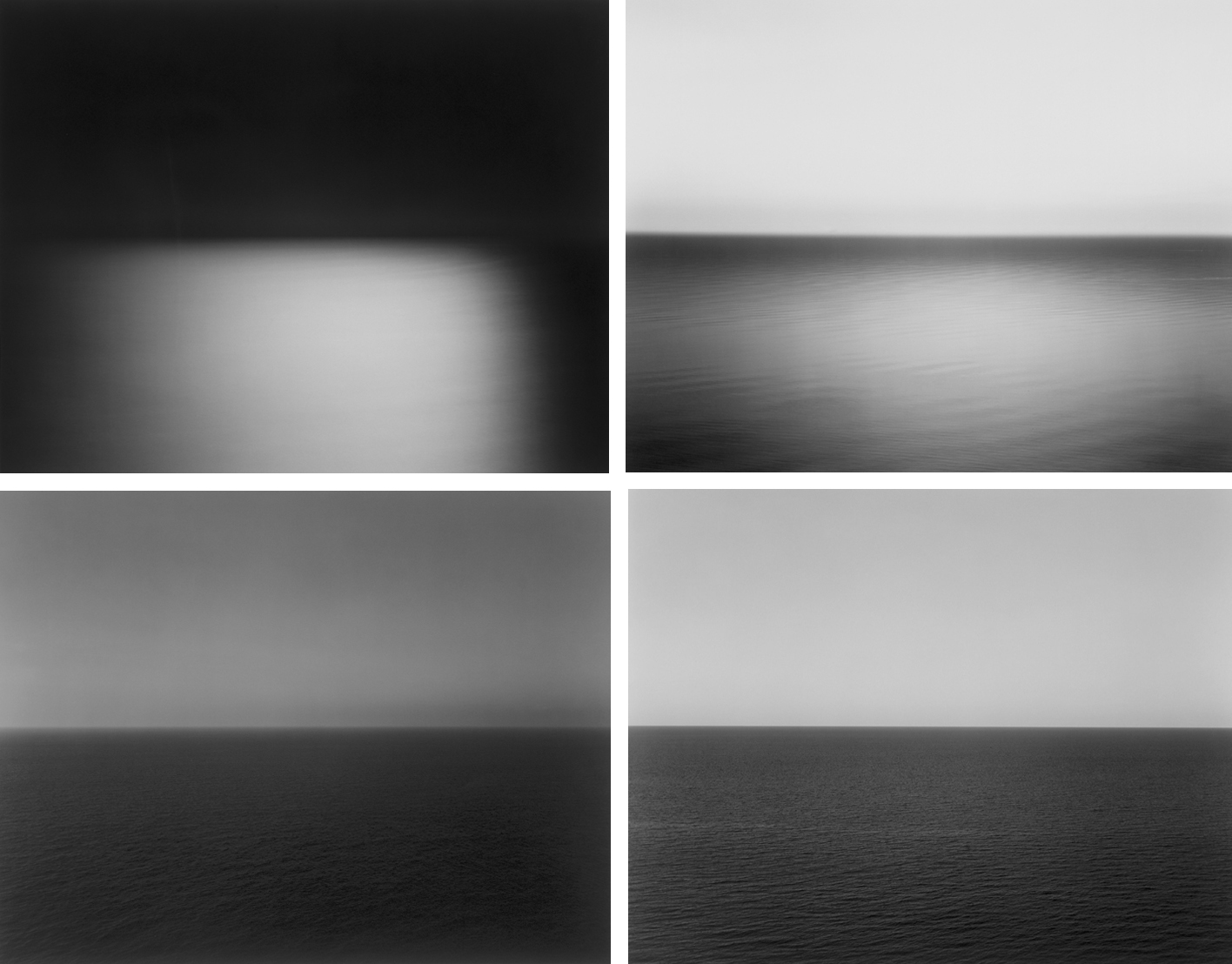
If you intend to explore sea landscapes you must do contextual research in relation to the art movement of Romanticism – see below. Technically you must make images exploring diverse quality of light, expansive views and weather patterns at different times of the day. Make sure to use a tripod, cable release and apply exposure bracketing and experiment with HDR techniques in post-production. Other techniques such as panoramic images and Hockney ‘joiners’ and Typology studies are also appropriate.
Jersey west coast has unique identity and geography. For many it is place of refuse from work, school and where they go for relaxation, leisure, beach, surfing, walking. If we think about Jersey and an island surrounded by water and with a one of the fastest tidal moments in the world you can look at photographers who has explored the notion of sea or water in interesting ways.
Michael Marten: Sea Change
Excellent use of diptych and triptych and exploring low vs high tides to see how it changes a landscape scene


Mark Power: The Shipping Forecats
Intangible and mysterious, familiar yet obscure, the shipping forecast is broadcast four times daily on BBC Radio 4. For those at, or about to put to sea, the forecast may mean the difference between life and death. In The Shipping Forecast, Mark Power documents the 31 sea areas covered by the forecast,

Sea / Coast / Marine Environment
In the Photographic Archive at the Society Jersiaise there are significant works by early Jersey landscape and architectural photographers such as Thomas Sutton

Remains of ruined coastal defence tower, Tour du Sud, La Carrière, St Ouen’s Bay, Jersey. Plate from Souvenir de Jersey, published 1854.
Other photographesr in the Photo-Archive who explored Jersey landscapes, topographical views, town, countryside, build-environments etc . Samuel Poulton, Ernest Baudoux, Albert Smith , Edwin Dale, AK Lawson, Paul Martin, Godfray, Frith (put in surnames first for searching online catalogue here.

Think about creating landscapes that relates to your commentary, possibly Vilde Rolfsen’s work on Plastic Bag Landscapes…
Chris Jordan: Midway: Message from the Gyre
Chris Jordan has been documenting an astonishing and disturbing effect of consumer waste: discarded plastic packaging and toys inside the stomachs of thousands of dead baby albatrosses.






Keith Arnatt (1930–2008) was a British conceptual artist. As well as conceptual art his work is sometimes discussed in relation to land art, minimalism, and photography. He lived and worked in London, Liverpool, Yorkshire and Monmouthshire. Apart from his conceptual works in 1960s and 70s Arnatt developed a set of images from a rubbish tip that developed from landscape based images to still-live of discarded objects.







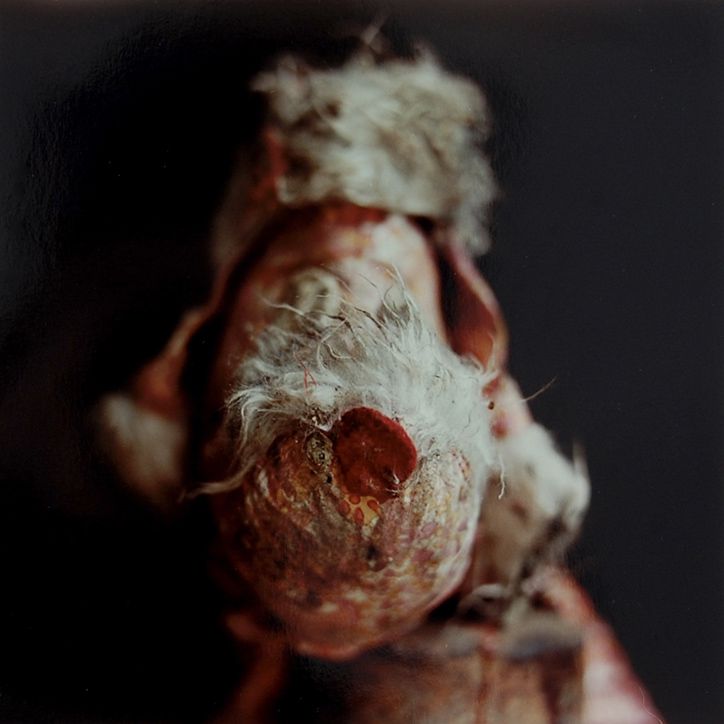


Pictures from a Rubbish Tip 1988–9 is a series of five large colour photographs by the British artist Keith Arnatt featuring close-up shots of rubbish that has been dumped at a local tip. In each photograph, the lens focuses upon select pieces of discarded food – such as bread, chicken bones and vegetables – that lie on clear and pale-coloured plastic bags. These bags both reflect and diffuse the surrounding daylight, highlighting the varying hues of the rubbish so that the scenes appear brightly coloured and partly abstract. Although the types of rubbish shown and their exact position within the compositions varies slightly, each is presented at an apparently fixed distance from the camera and this, as well as the similar lighting effects used across the five works, creates a sense of cohesion in the series.
Arnatt took the photographs in 1988–9 on multiple trips that he made to the Coleford Tip near his home in Tintern, Monmouthshire. He did not use any artificial light when shooting the frames, relying solely on daylight, and the artist employed an extremely shallow depth of field, sharply focusing the lens on the closest part of the featured object. According to the critic Mark Haworth-Booth, Arnatt ‘chose to place this very narrow plane of focus on each object’s nearest edge. This … Arnatt believes, puts the viewer in the position in which he himself was when he first noticed and picked up these half-buried objects’ (Mark Haworth-Booth, Keith Arnatt: XXI Bienal de São Paulo, exhibition catalogue, Bienal de São Paulo, São Paulo 1991, p.1).
According to the photographer David Hurn, Arnatt’s decision to present the rubbish close up and in bright but diffuse lighting is an attempt to conceal the image’s context so that its subject – a piece of rubbish – is initially unidentifiable as such. Hurn has stated that the series is
about looking – about the difference between knowing something and seeing something; the fact that we might know that this is a bit of orange or a cake, but when we see it taken out of context, photographed in a way we don’t normally see, it can look like a Turner.
(Grafik and Hurn 2009, p.10.)
In this way, the discarded, mouldy food items can be seen as objects of beauty when presented in a different setting, especially when using framing techniques, colour and lighting and that enhance the visual appeal of the images. Furthermore, curator Clare Grafik has contended that in their framing and composition, Pictures from a Rubbish Tip reflect ‘Arnatt’s interest in seventeenth-century Dutch painting, particularly the still life genre and the vanitas tradition’ (Grafik and Hurn 2009, p.137). Vanitas paintings depict objects thought to symbolise the transience of life and the futility of earthly goods and pursuits, including books, fine objects and foodstuffs. In a similar way, by focusing on food items that have been discarded en masse, Pictures from a Rubbish Tip presents the wastage and excess that characterise modern consumption, although Arnatt shows these objects in a manner that simultaneously emphasises both their beauty and their decay.
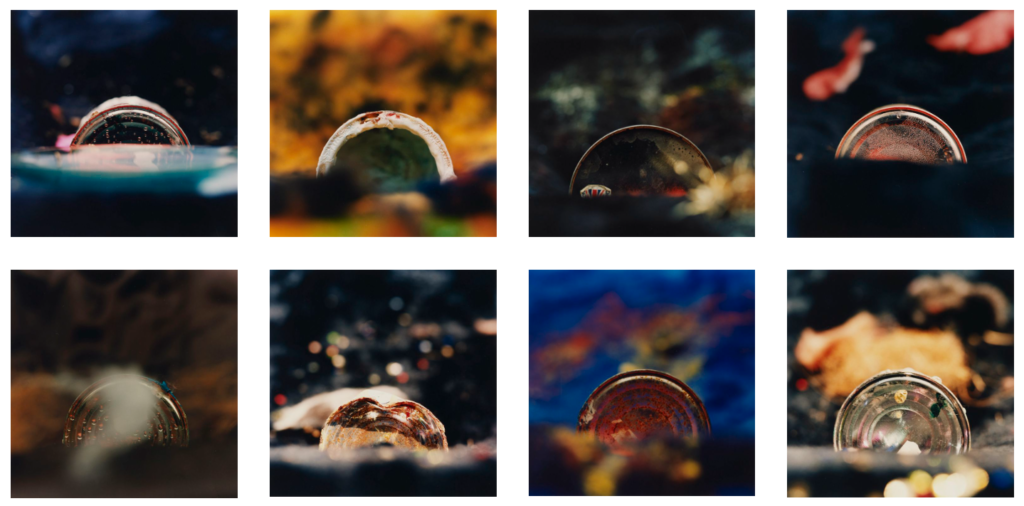

or Yao Lau, who creates contaminated landscapes using landfill sites and mounds of derelict rubble.
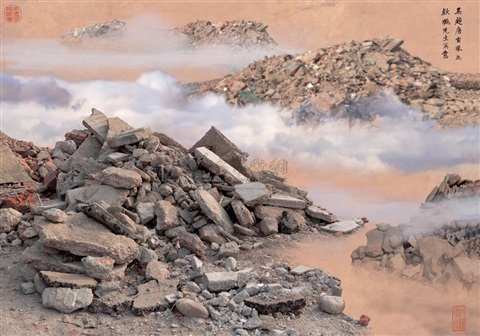
…or Alice Weilinga and her adapted images of North Korea and the contrast of the “the dream” versus the reality of working life in an oppressive state
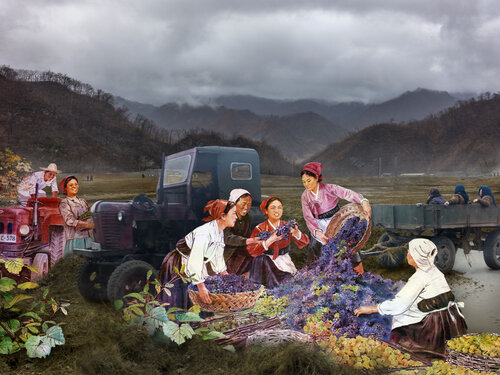

Industrial-scale US cattle farms captured by satellite imagery. These images, discovered by Henner while researching satellite photographs of oil fields, look more like post-apocalyptic wastelands than acreage in America’s heartland.

Zed Nelson: The Anthropocene Illusion
In just a few decades, we humans have altered our world. Our planet is crossing a geological boundary: from the Holocene into the Anthropocene. Humans have left the countryside for the city but the desire for contact with nature remains. So, we have become masters of a stage-managed, artificial ‘experience’ of nature. This project examines humankind’s fractured relationship with the natural world, revealing not only a phenomenon of collective self-delusion, but also a craving for a connection to a world we have turned our backs on.




Lucas Foglia: Human Nature
Today, nature both heals us and threatens us. As we spend more time than ever indoors looking at screens, neuroscientists demonstrate that time outside is vital to human health and happiness. Yet, we are vulnerable to the storms, droughts, heat waves, and freezes that result from climate change.
Human Nature is a series of photographic stories about humans and the natural world, at a critical time for both. Each story is set in a different ecosystem: city, forest, farm, desert, ice field, ocean, and volcano. The photographs examine our need for wild places in the context of the Anthropocene.
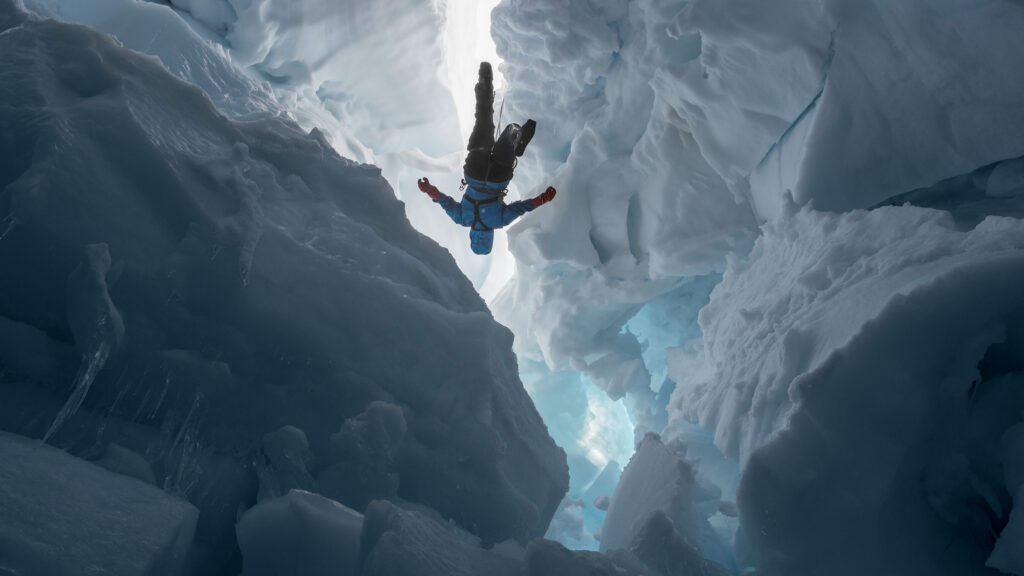






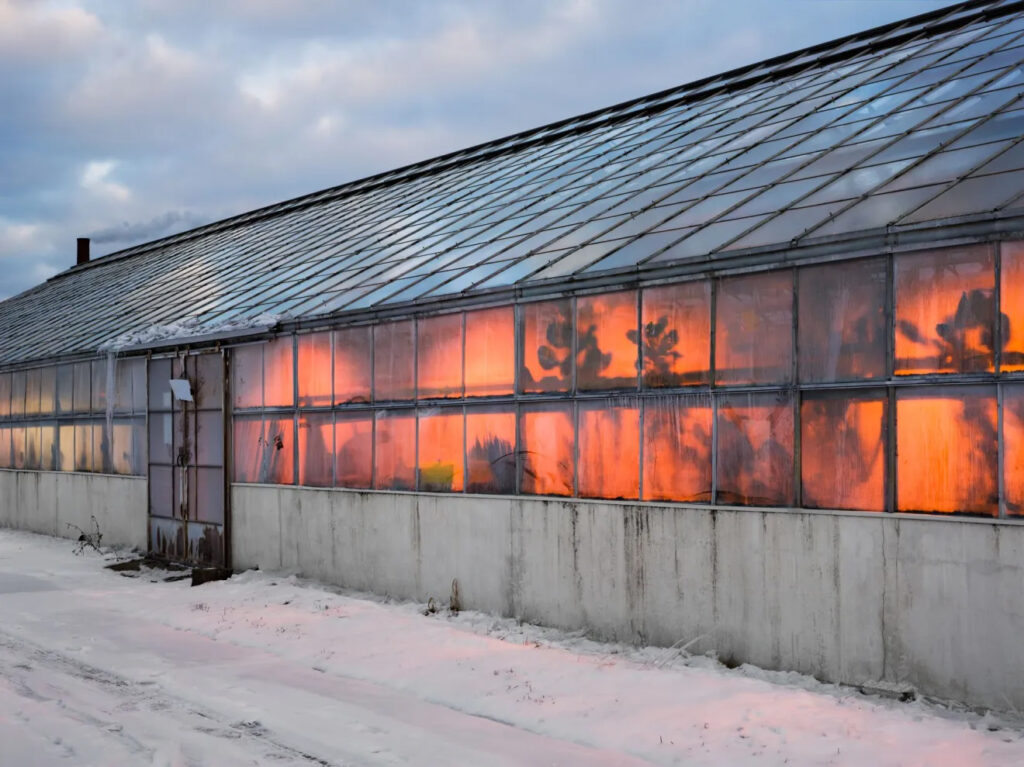








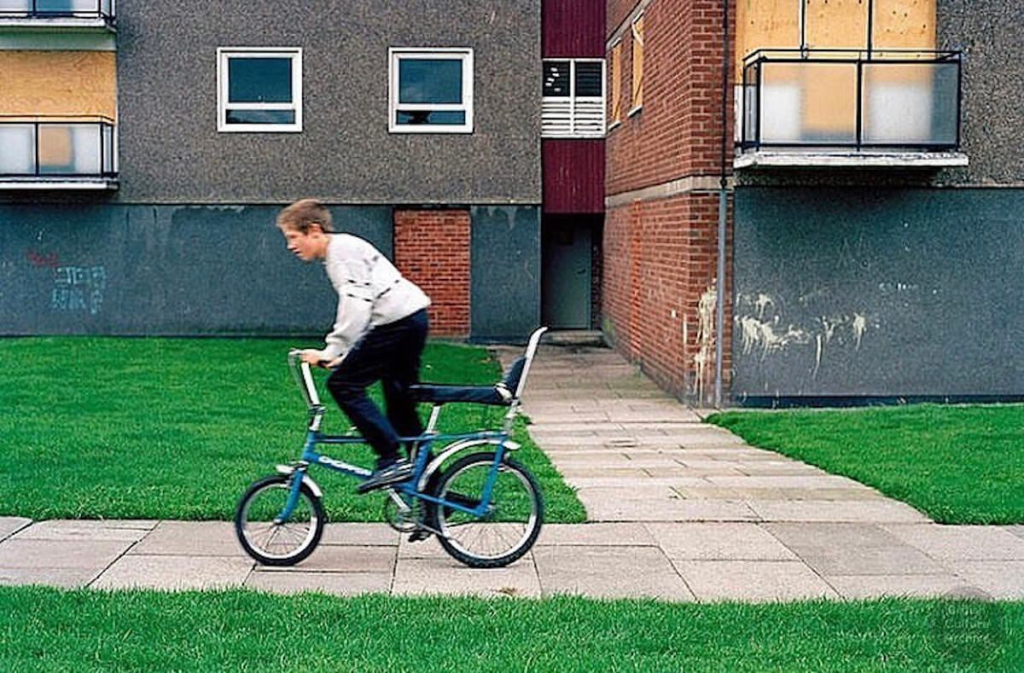
CLIMATE CHANGE > ANTHROPOCENE
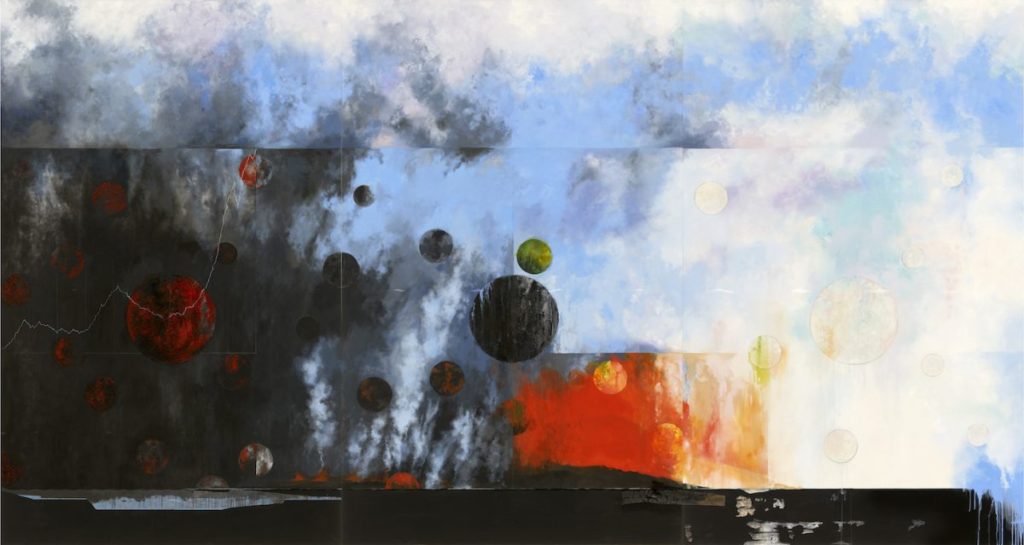
Diane Burko: Read a review Visualizing Climate Change through Abstract Expressionism of Burko new exhibition Seeing Climate Change. Her work is compared with Abstract Expressionistic painters such as Barnett Newman and Clifford Still and sublime paintings by J.M.W. Turner.
Diane Burko’s images of melting glaciers and dying coral reefs are not just pictorially impressive; they have strong emotional impact. (Carter Ratcliffe)
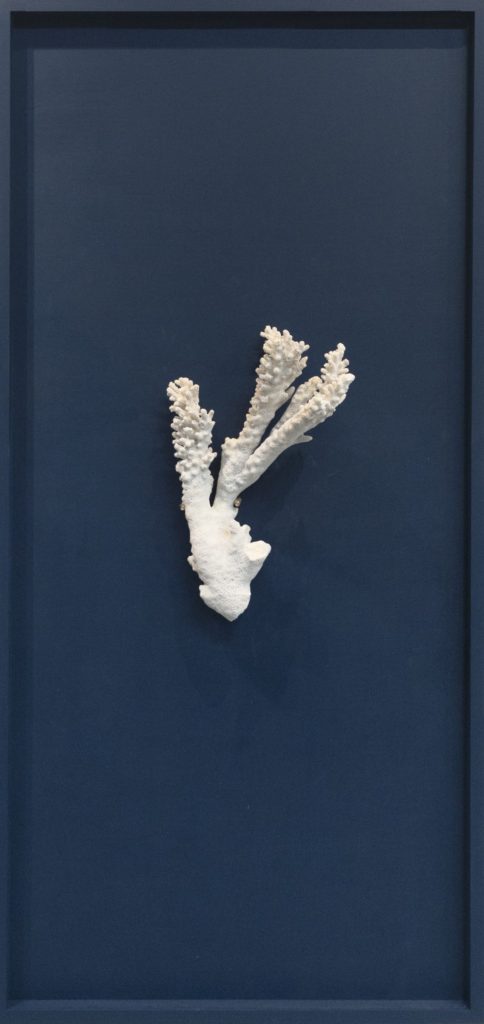
As a photographer how would you respond to climate change? Can a study of the environment and landscape of Jersey be an inspiration for a Personal Study?
For comparison, see work by photographers; Stephane Couturier and his series Melting Point or Urban Archaeology
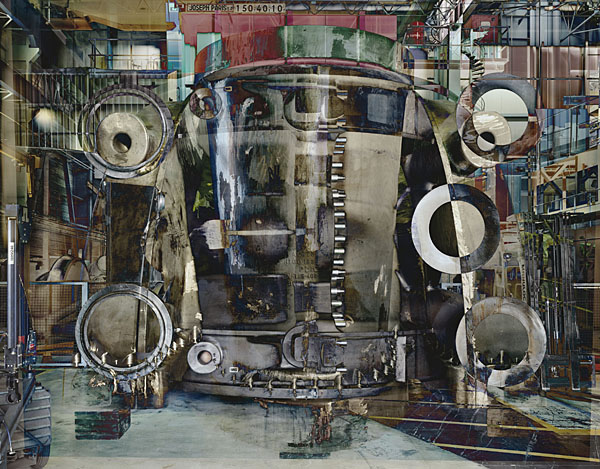

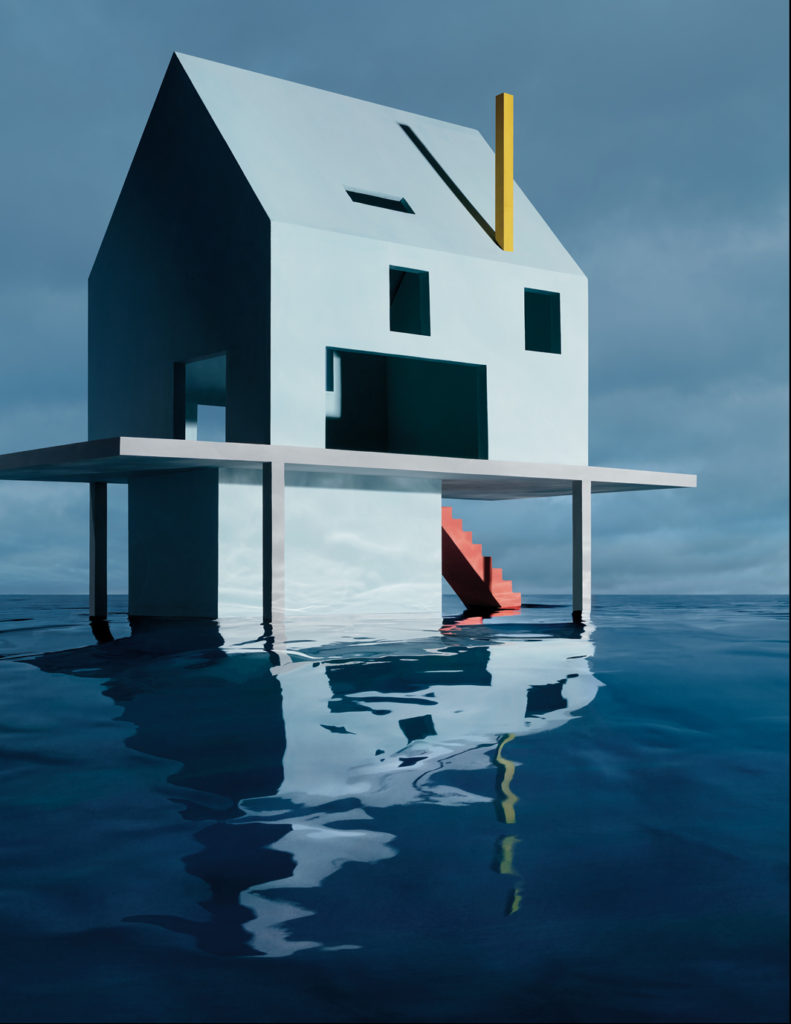
Other photographers exploring aspects of ANTHROPOCENE
Edward Burtynsky (Oil, Quarries, Water, Mines, Anthropocene), Mitch Epstein (American Power), Vera Lutter (Body of Work), Michael Wolff (Architecture of Density), Philippe Chancel (Fukushima), Robert Adams (Turning Back), Edgar Martins (The Diminishing Present), Gideon Mendel (Drowning World, Scorched Surfaces), Yao Lu (New Mountain and Water), Emily Allchurch (Jersey born artist based in London)
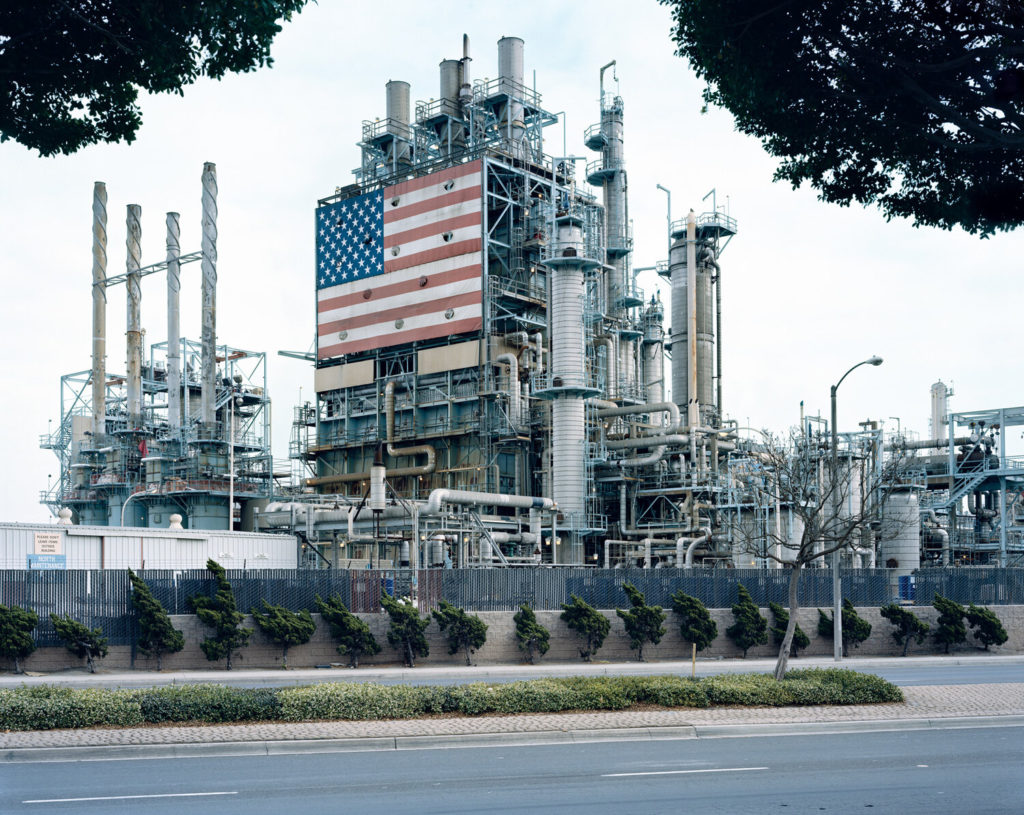
Study latest issue: Photography+ Environment #14 from Photoworks that looks at the role of the photographer in documenting and confronting climate catastrophe. To explore this question, each writer and artist invites us to think about the relationship between photography and climate change, and between the photographer and their environment
Links to inspirational artists and ideas…
https://www.lensculture.com/articles/ingrid-weyland-topographies-of-fragility
https://www.lensculture.com/articles/julie-hamel-altered-negatives
https://www.lensculture.com/articles/william-eggleston-the-outlands
https://www.lensculture.com/solo-exhibition/peter-franck-lost-found-and-seen
https://www.lensculture.com/articles/sara-cuce-memory-of-the-eyes
https://www.lensculture.com/articles/tobias-kruse-deponie-landfill
https://www.lensculture.com/articles/charlotta-hauksdottir-a-sense-of-place
https://www.lensculture.com/articles/ohad-matalon-across-a-dark-land
https://www.lensculture.com/articles/the-most-fantastic-the-most-fantastic-rocks
Some other suggestions for you to look at…
- Edward Burtynsky…nature transformed through industry
- George Marazakis…humanity’s effect on Earth
- Sebastiao Salgado…documentary photographer and photojournalist, respect for nature while also sensitive to the socio-economic conditions that impact human being
- J. Henry Fair…uses pictures to tell stories about people and things that affect people.
- David Maisel…radically human-altered environments.
- Camilo Jose Vergara…documentation of American slums and decaying urban environments.
- Andrew Moore…the effect of time on the natural and built landscapes.
- Yves Marchand & Romain Meffre….modern ruins.
- Yao Lu… contaminated landscapes – created from landfills and mounds of derelict rubble.
- David T. Hanson… waste land.
- Troy Paiva…”Urban Explorer” investigating the ruins of “Lost America”.


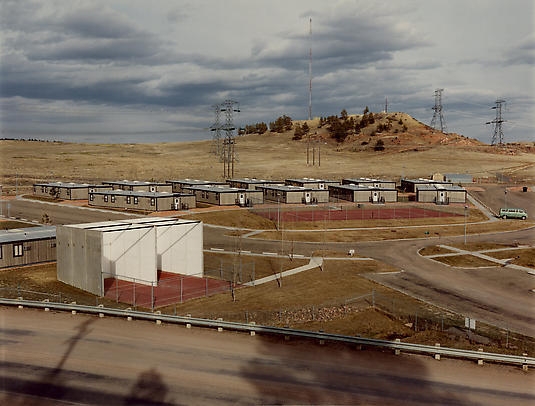
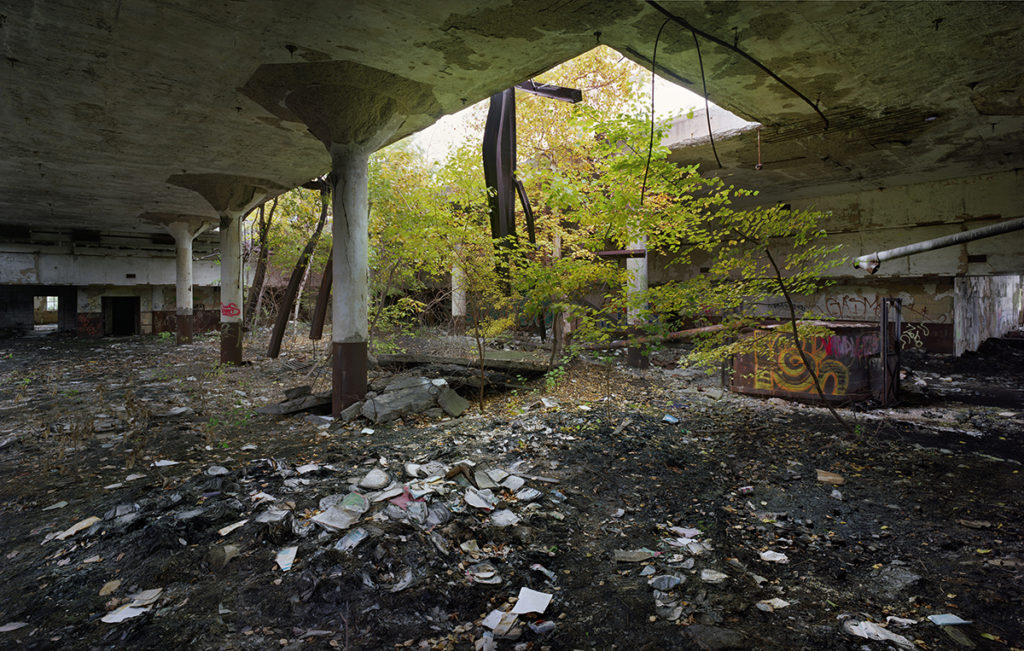
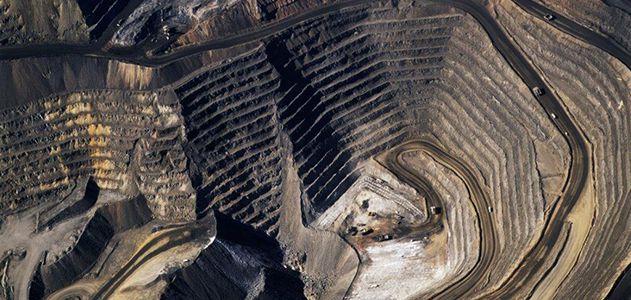

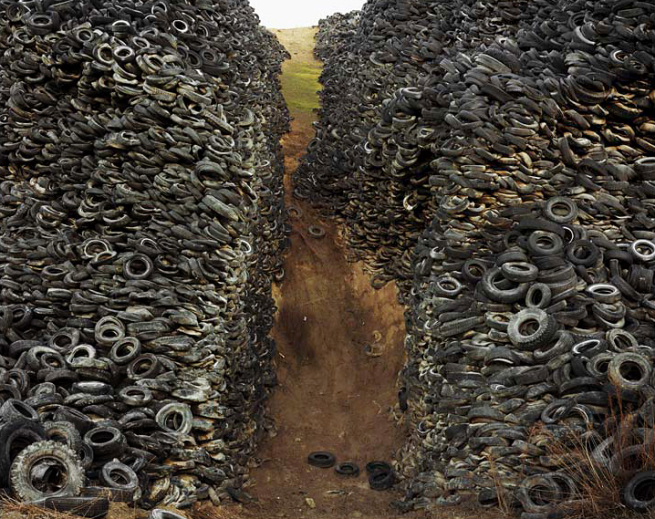
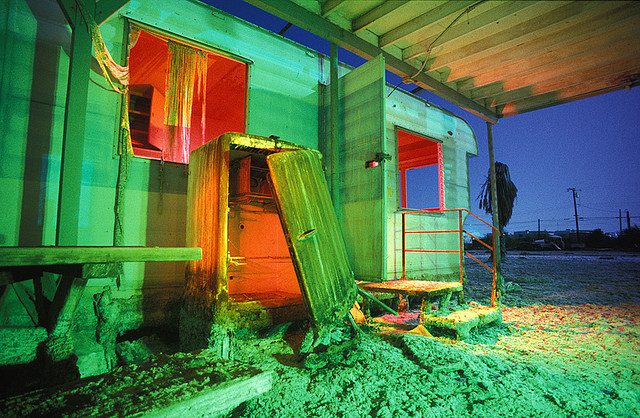
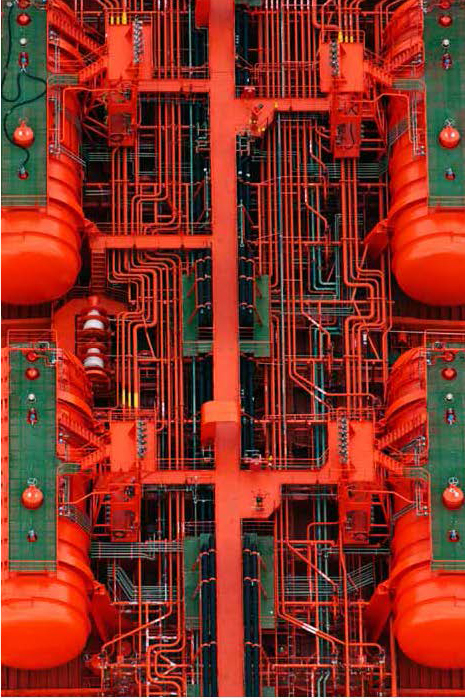




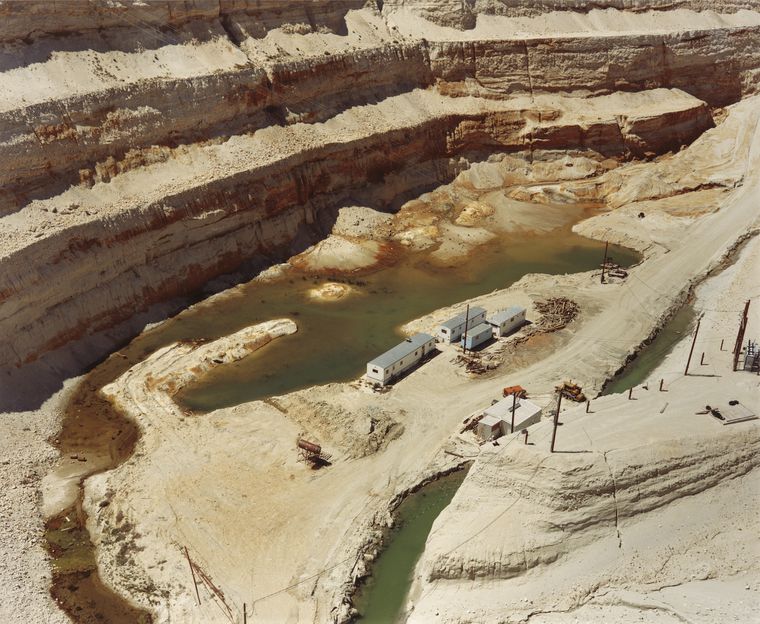
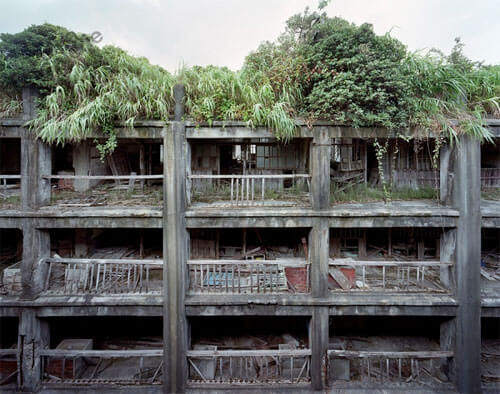
Obviously, you can also use past photographers we have looked at throughout the landscape unit, especially industrial and urban landscape photographers. (see below)
- Alexander Apostol
- Bernd & Hilla Becher
- Donovan Wylie
- Edward Burntsky
- Frank Breuer
- Gerry Johansson
- Joel Sternfeld
- Josef Schultz
- Lewis Baltz
- Noemie Goudal
- Darren Regan Harvey
- Keith Arnatt
ABSTRACT Approaches
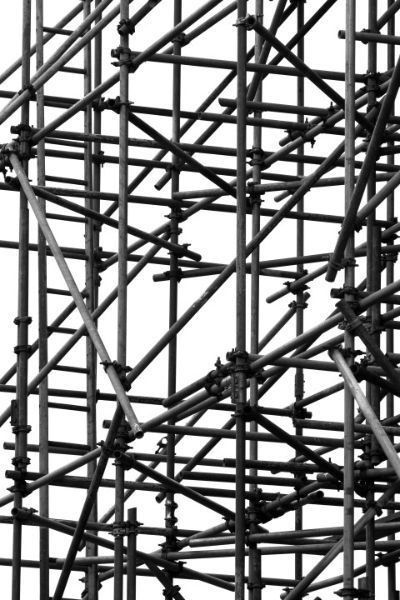
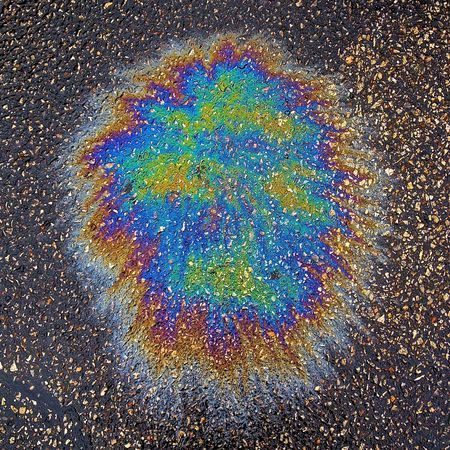

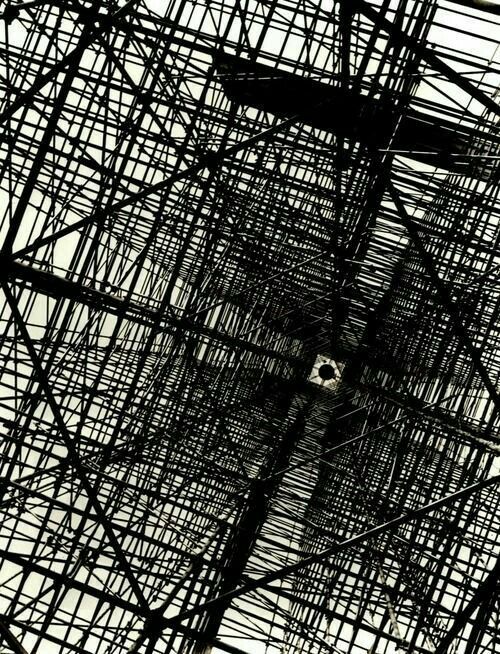
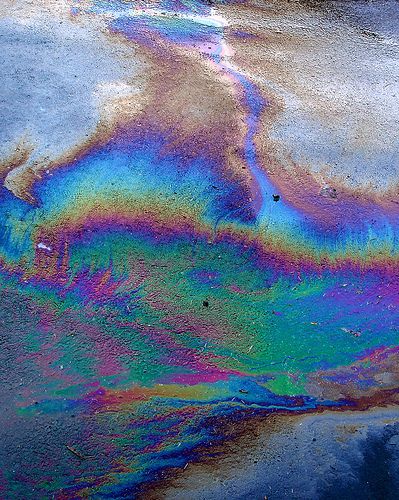

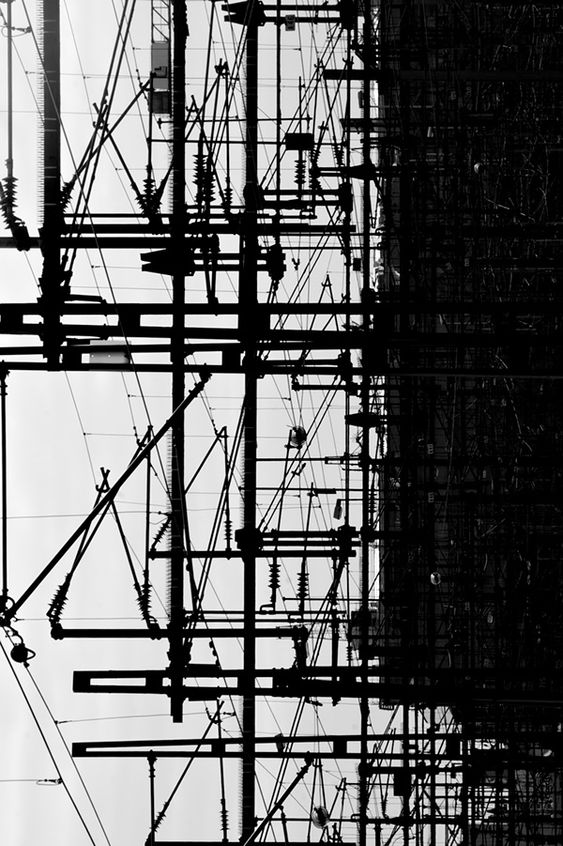


You may focus on and wish to respond through the genre of abstract photography. Look back to the photographers from your first unit or discover new ones. Below are just some images to help you to engage in the topic.
OBJECT – studio lighting
You can also use your skills to produce an object based project. Looking at how objects might reflect the theme of Anthropocene. ie: single use plastics, disposable objects, waste, rubbish etc.
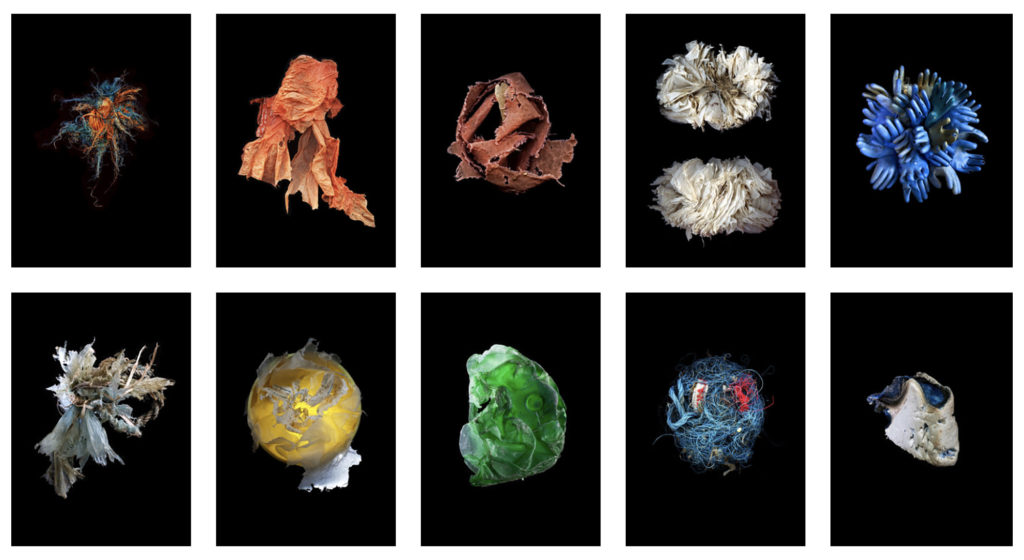
Barry Rosenthal – collection of discarded plastic objects.
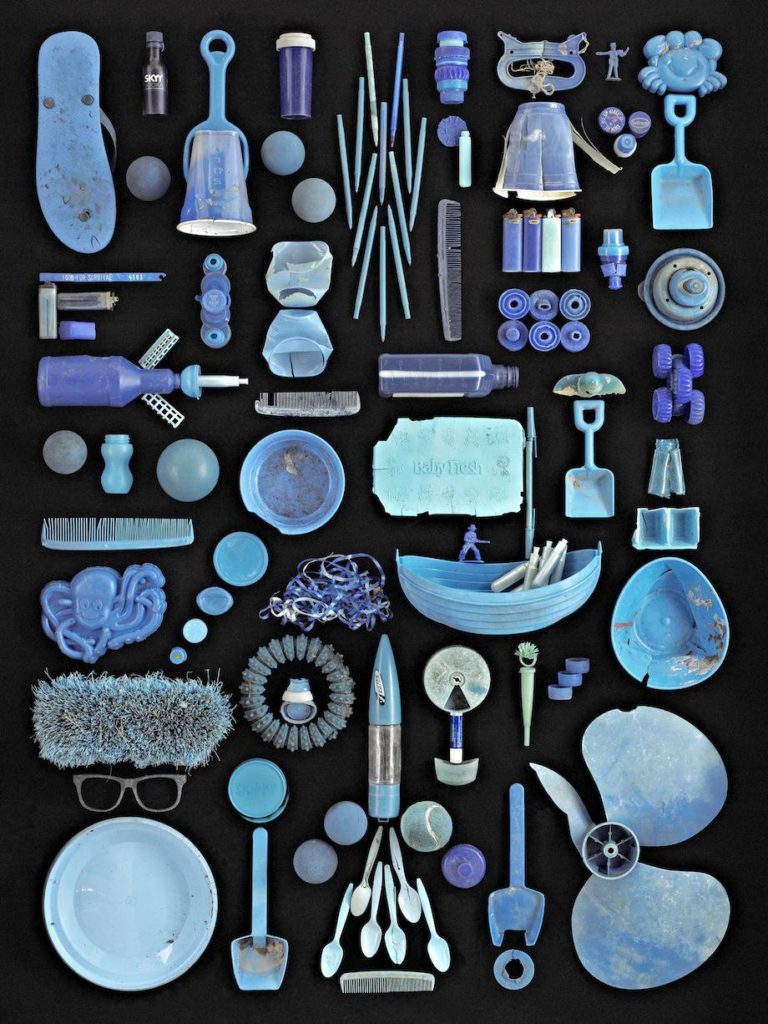
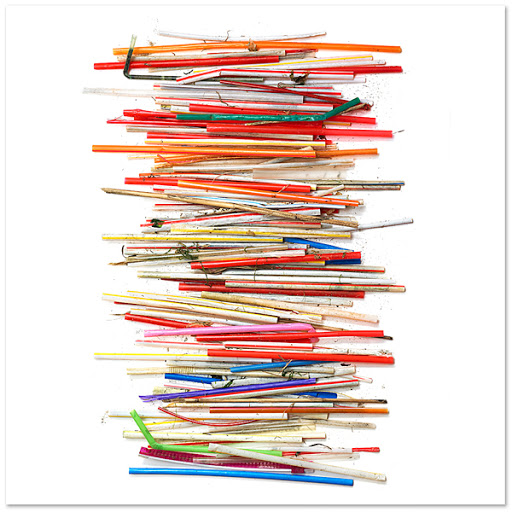

Naomi White – plastic bags.
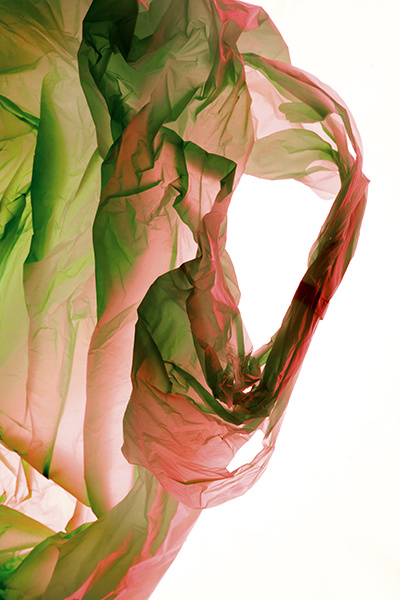

Sophie Thomas – found, discarded plastics/rubbish.
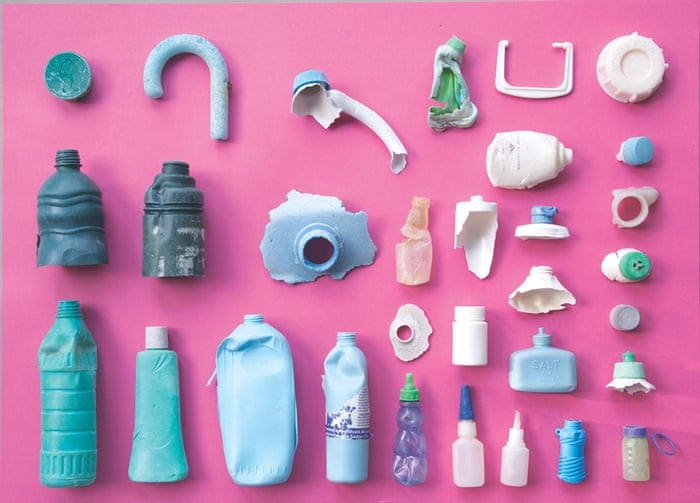
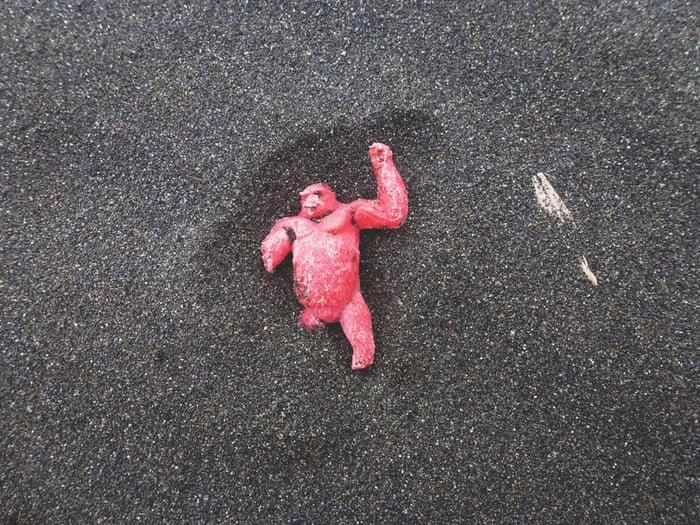
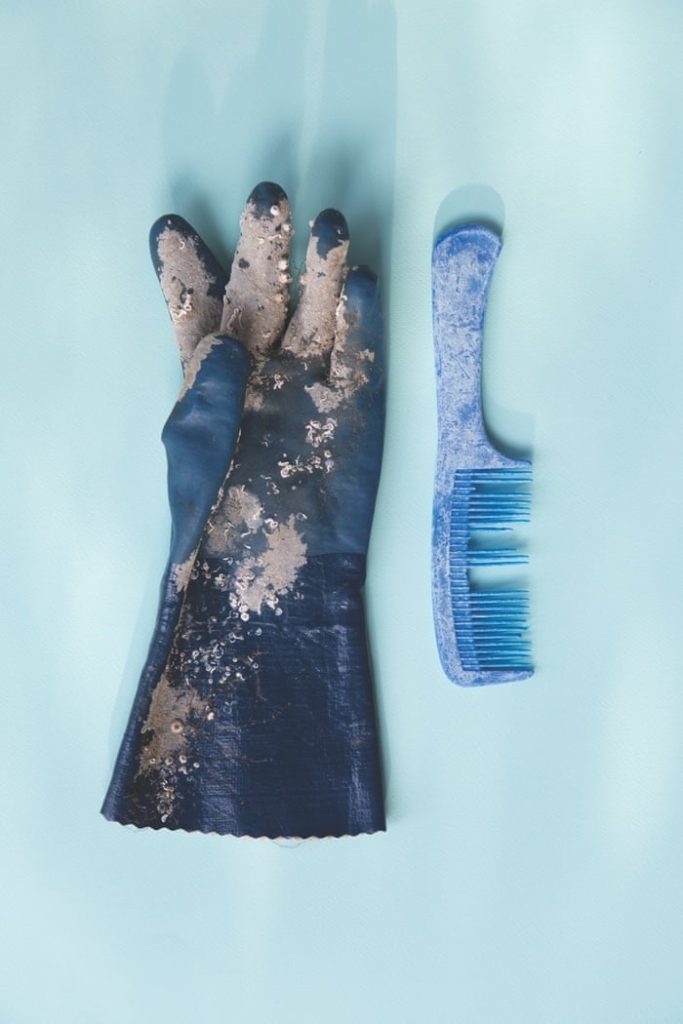
Steven Gallagher – plastic bag topology photography

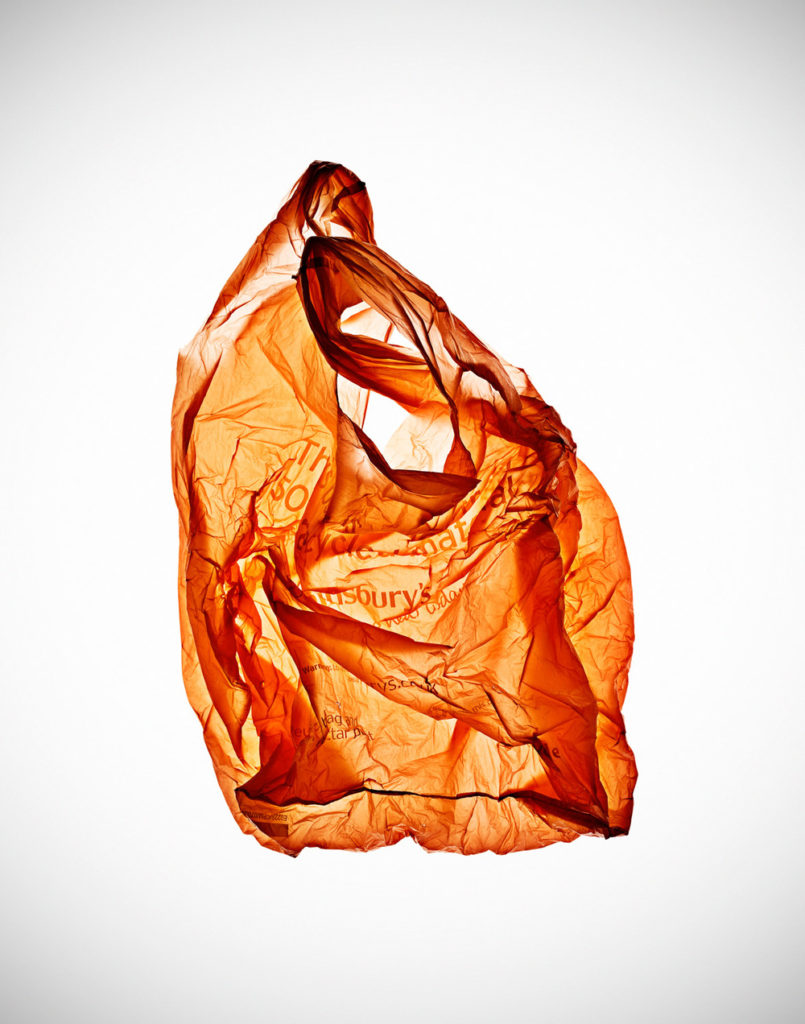
Mandy Baker – marine plastic debris

Student response: Nicholas Gallery Waste
Essay: In what way have Mandy Barker and Keith Arnatt explored the concept of Anthropocene in their work?



In the final version, I changed the cover images to what was originally the first pages in the book. I felt that these images were more powerful in portraying my ideas as well as captivating the essence of my project.
I summed the topic of my project in one word being ‘Waste’ as it reflects the three concepts behind my work:
- The ‘Waste’ featured in the images
- The action behind humans throwing away the things they do not consider important.
- The consequences of disposing items to ‘Waste’ away.
- The title is written sideways to give a ‘scientific document’ feel.
I repeated the same pattern of images throughout the book, to give an organised aesthetic. The circle images are placed alongside their close-up comparisons to show the detail in the items depicted. I chose to make many of my images full scale, as they all have dark backgrounds. Black is used in a minimalistic style to emphasize the items, as well as being associated with darkness and negativity to reflect the topic of pollution.
Link to Nick’s Blog
Student response: Megan Woolsgrove La Motte
Essay: How do the photographers Chrystel Lebas and Mandy Barker explore issues of the changing environment?





I started my project with the intention of exploring issues of pollution and plastic specifically, taking inspiration from the photographer Mandy Barker and experimented in my first shoot by taking images with string infront of the lens looking at rules of manipulation. I then found the photobook ‘The Meadow’ by photographers Barbara Bosworth and Margot Anne Kelley which is what first interested me in photographing and exploring specific areas, as well as gathering objects and photographing them. I also discovered the photographer Chrystel Lebas and her photobook ‘Field Studies: Walking through Landscapes and Archives’ which is where I read about the changing environment. She compared her modern images to the photography of Edward James Salisbury in the early 20th century and walked in his footsteps, going to the same areas he did to explore how the environment had changed over 100 years. This is where I decided that the concept for my project would be looking at how the natural environment had changed over 90 years at the location La Motte. I found archival images from this area and thought i would build my photobook around them, comparing and contrasting them to my own images. I noticed Lebas’ influences from sublime ideologies by Edmund Burkina his book ‘Enquiry into the Origin of our Ideas of the Sublime and the Beautiful’,with her images being vast and other-worldly, which is an aspect I wanted to reflect in my own work. From then on, I did an additional five shoots where i went and took landscape images of La Motte and at the same time gathered natural objects that i found on the island and the beach i.e. rocks, seaweed, flowers. I did multiple shoots where I photographed these objects formally with plain background and edited them to reflect the work of early botanists where they used light sensitive paper to create photograms. I did this as i thought it would give my project and photobook a scientific appearance and reflect that of an investigation into a specific area. Towards my final shoots, I walked around La Motte and tried to find man made objects that I could photograph to perhaps represent how the natural landscape had changed.
Link to Megan’s Blog
THINK
What and where are you going to photograph and how you are going to take your images!!
Is it out and about, indoors, setting up your own lighting, collecting objects, photographing people, looking for abstract imagery etc.
Contacting Ronez quarry and gaining access to take photographs? Explore the industrial areas around La Collette – power station, recycling centre? The impact of farming on the land – plastic sheeting, poly tunnels etc, etc. Collecting washed up plastics from the beach. Asking family and friends to photograph them etc.
WHAT do you want to visually comment on?
•Plastics •Open cast mining •Urbanisation (concrete jungle) •Deforestation •Mass Wastage •Non Recycling •Disposable Society (‘throw away’) •Land Erosion •Climate change •Over population •Poverty (social divides) Rich/Poor •Climate change •Ozone layer •Natural Resources (fossil fuels – oil/coal etc) •Industrialisation – POLLUTION air, ocean, light etc.
YOUR POLITICAL STANCE
You may decide that you want to make a statement on the current situation in Jersey. Take images that may evoke discussions to do with over population, the housing crisis, social divides (rich/poor), securing National Park land etc, etc.
Below are helpful links:
The period during which human activity has been the dominant influence on climate and the environment.
The IMPACT humans have had on the PLANET.
Where in Jersey is it anthropogenic?
- Open Cast Mining – Quarries: Ronez, St Peters Valley, Sand Quarry St. Ouens
- Power Stations – La Collette, Bellozane Sewage Treatment
- Urbanisation – St Helier: Grands Vaux, Le Marais Flats, Le Squez etc.
- Mass Wastage – La Collette recycling centre
- Disposable Society – La Collette recycling centre – refrigerator mountains etc
- Land Erosion – farming industry: poly tunnels, packing sheds, plastic covered fields etc. Old Glass Houses
- Over Population – poverty/social divides: Social Housing sites. Car Parks, traffic etc.
- Industrialisation – La Collette area, Bellozane, industrial estates. Desalination Plant, German Fortification (WW2)
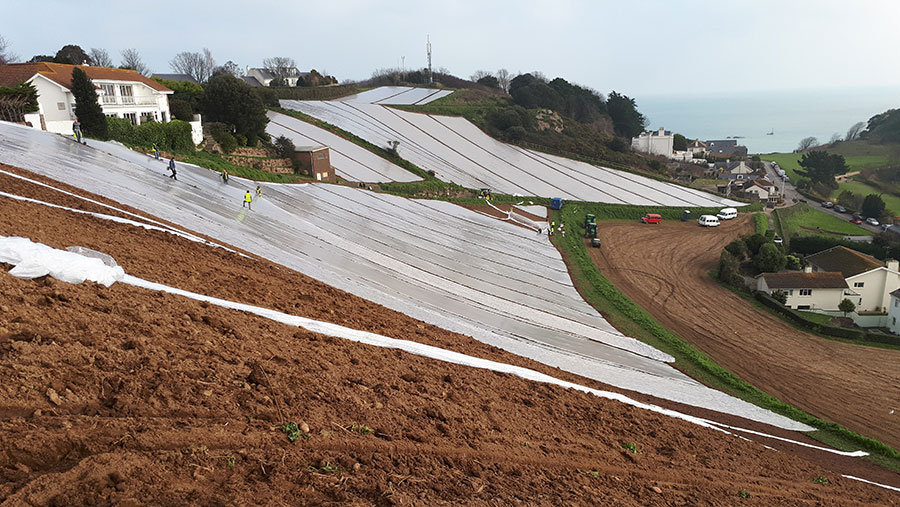

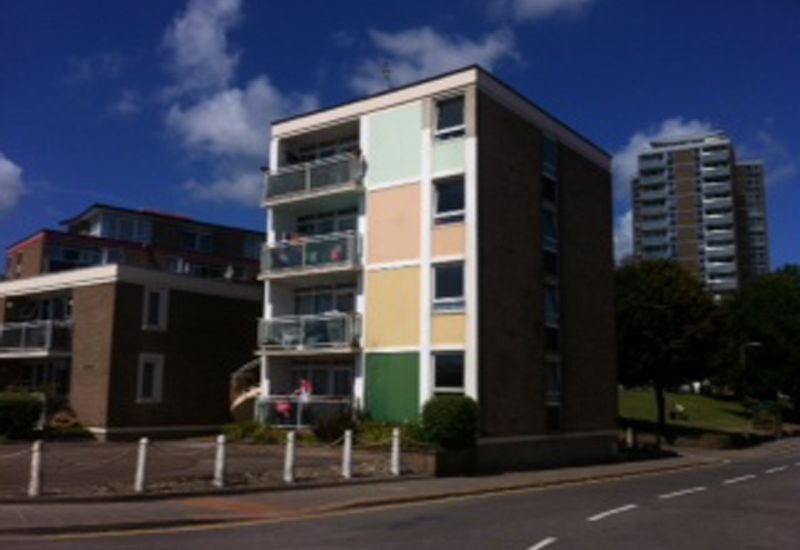

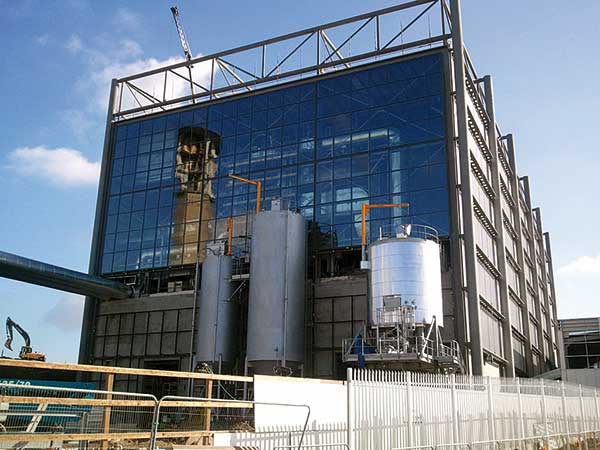


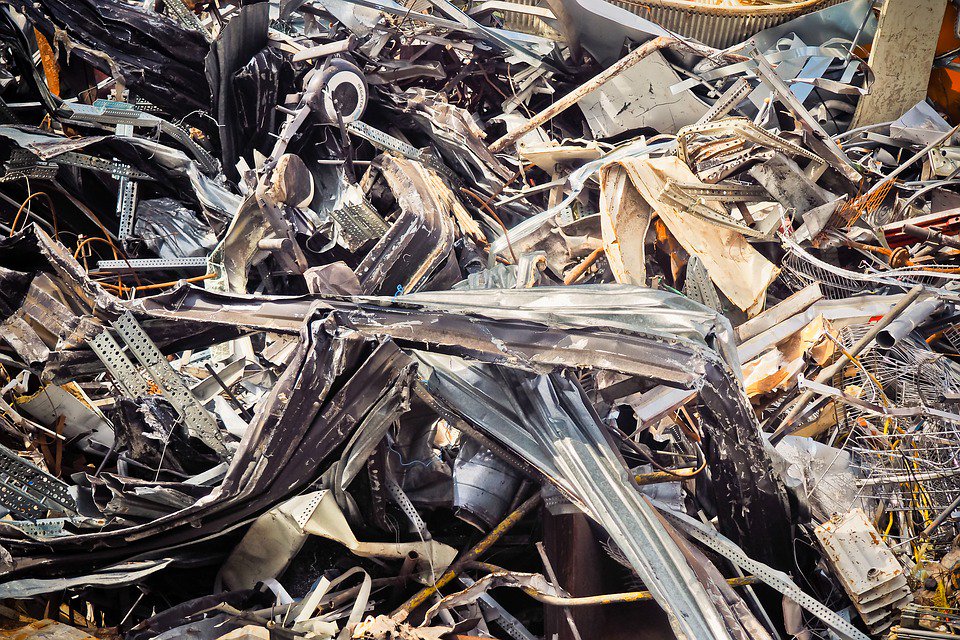
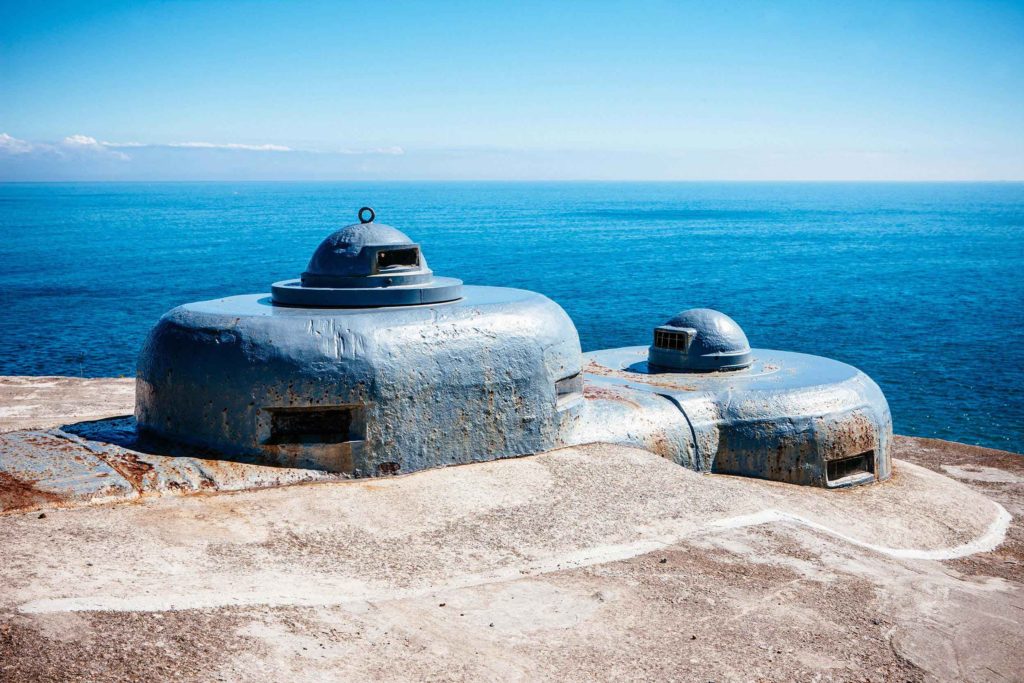
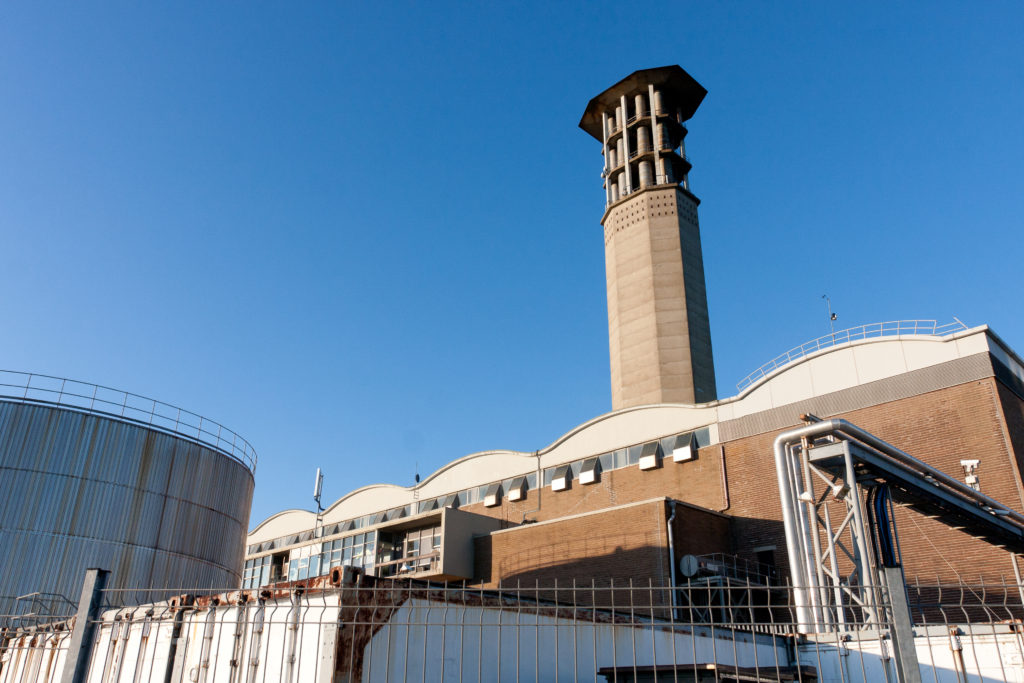

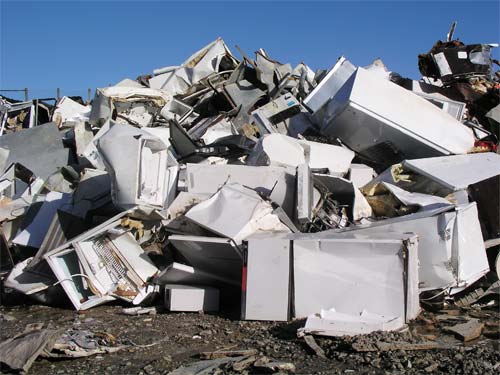
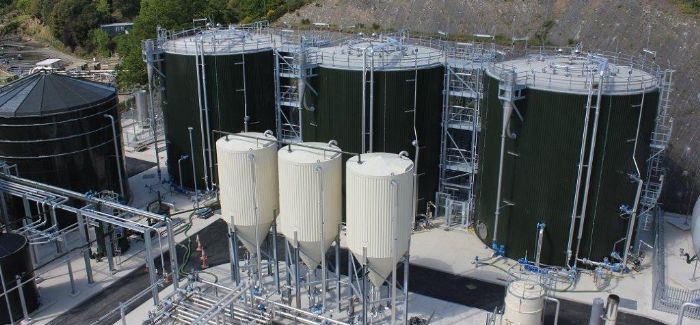
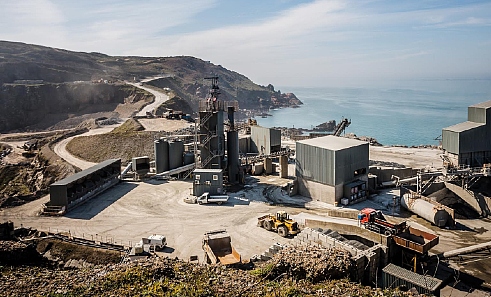
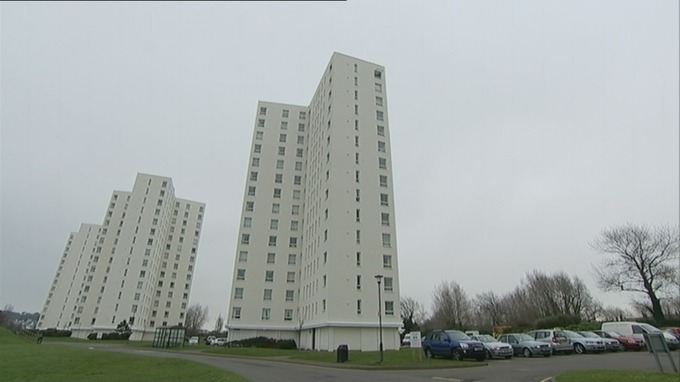



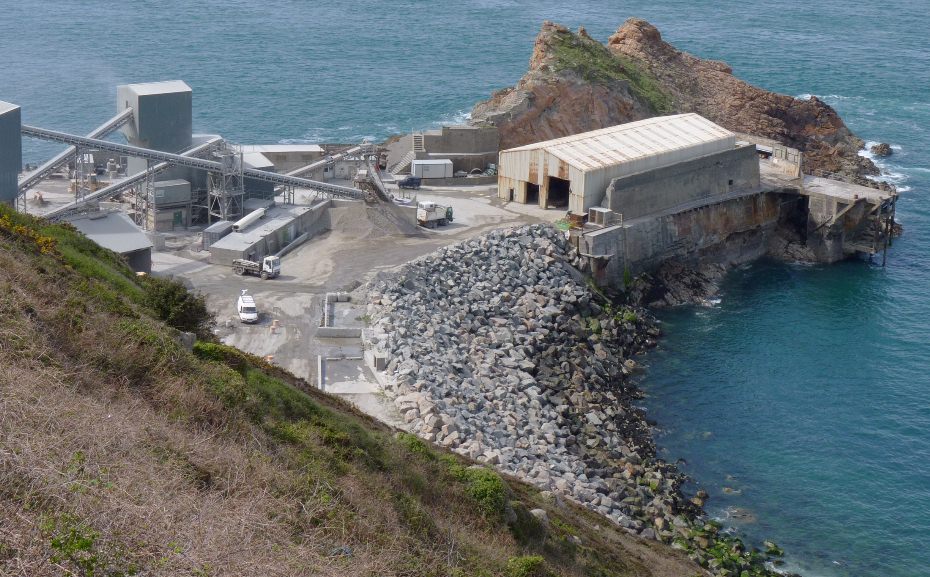
Altered Landscapes
Altered landscapes focus on the process of using photoshop, or physically, in order to change the original composition of a landscape photograph. This may include changing the colours of the image, or in general changing the composition of the photo itself. For example cutting and pasting certain elements or adding forms of repetition or echo to the photograph.
Examples of altered landscapes

Fernweh series explores the concept of a modernist city through its extreme relations to the landscape. The images are placed on a blurred line between a past which reminds us of a future and a future which looks like a past. Scenes are referring to the modernist ideas and aspiration of a man conquering the natural wild land and subordinating it to the rational order, and the consequences of those aspirations, which switched into the longing for an escape from urban environments.

Noémie Goudal’s practice is an investigation into photographs and films as dialectical images, wherein close proximities of truth and fiction, real and imagined offer new perspectives into the photographic canvas. The artist questions the potential of the image as a whole, reconstructing its layers and possibilities of extension, through landscapes’ installations. Noémie Goudal is represented by Edel Assanti (London) and the Galerie Les Filles du Calvaire (Paris).

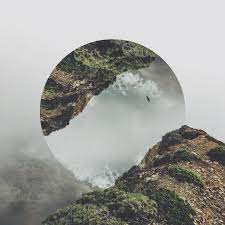

In Landscapes without Memory, an exhibition of forty large-scale works made between 2002 and 2005, Fontcuberta harnesses a piece of landscape-rendering computer software designed for the military, which creates photo-realistic three-dimensional models based on two-dimensional sources.
Fontcuberta uses software called Terragen to create photorealistic visualisations of landscapes, but instead of using cartographic data as this software is designed to use, Fontcuberta has replaced it with canonical images of landscapes taken from the history of art.
Interview with Joan Fontcuberta here…
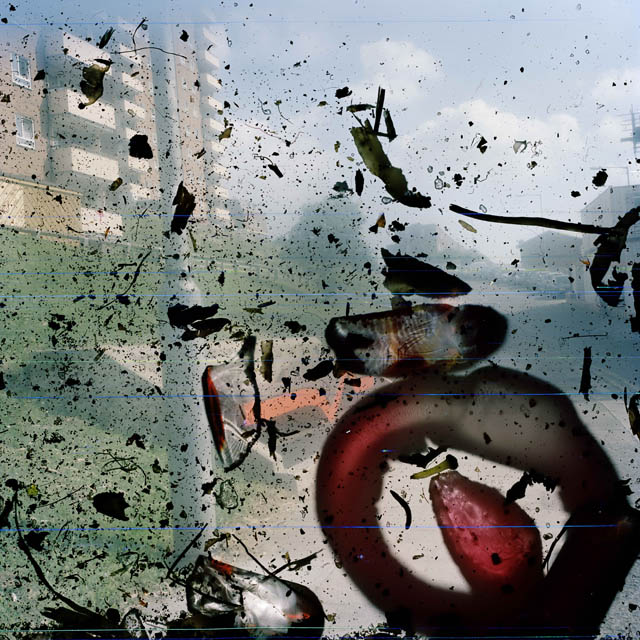
Gill is a British photographer, who mainly draws inspiration from his immediate surroundings of inner city life in East London and more recently Sweden with an attempt to make work that reflects, responds and describes the times we live in.
His work is often made up of long-term photo studies exploring and responding to the subjects in great depth.
Altered landscapes inspired moodboard
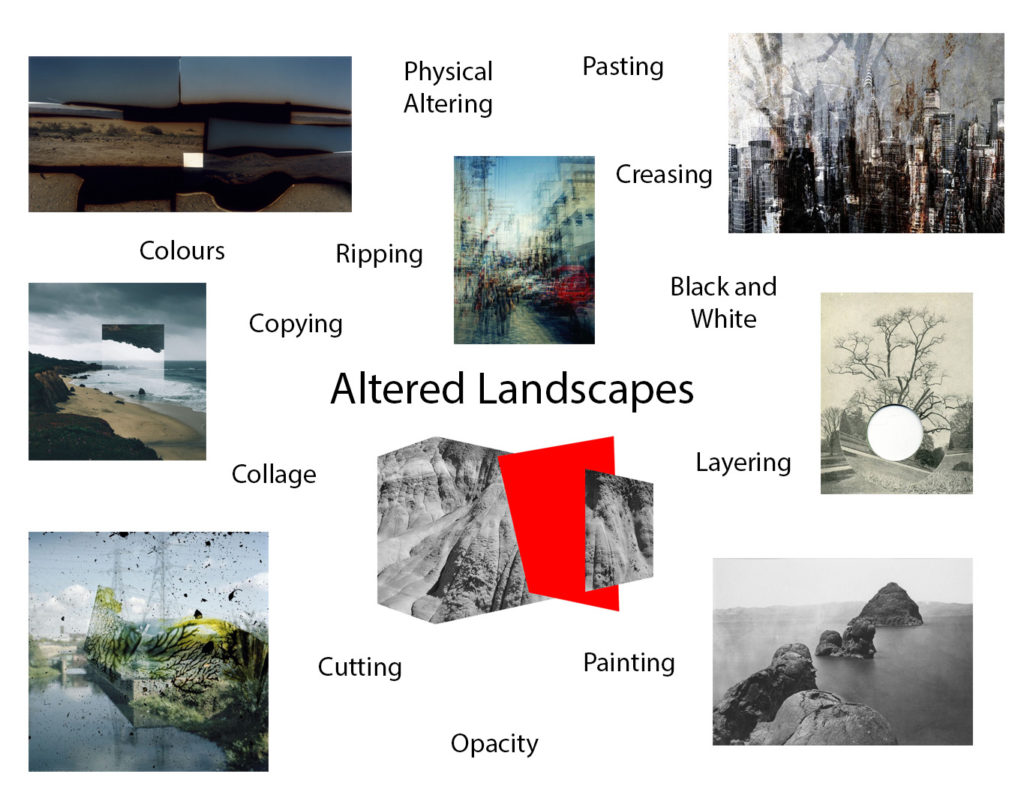

Creative Techniques to explore…
Joiners
Panoramics
Globes
Tilt-Shift
Kaleidoscopic
Photomontage
Text
Embroidered / stitched / connected / collaged
Acetate + projections
Interference eg Stephen Gill
Investigate relevant sources and produce
your own response to Discarded items.
| Some other suggested resources: The photosculptures of Alina Szapocznikow. Keith Arnatt’s Pictures From a Rubbish Tip. Peter Fraser’s Everyday Icons and Nazraeli Monograph. Stephen Gill’s A Series of Disappointments. Gabriel Orozco’s Asterisms and this great article about his practice. Peter Coles’ Canivaux series. The Golden Sack by photographer Rut Blees Luxemburg and writer Michael Salu. Michael Wolf’s Lost Laundry, and My Favourite Thing – Groups. Liam Frankland’s Lost and Found photography project. Alan R. Jones’ Orphaned Objects. Erik Burg’s Found and The Party’s Over. Kevin Newark’s Protoplasm series. Danny Treacy’s Those series. Matt Russell’s Waste series. Barry Rosenthal’s Found in Nature series. Hong Hao’s My Things No. 5 – 5000 pieces of Rubbish |
Accessing Archival Imagery
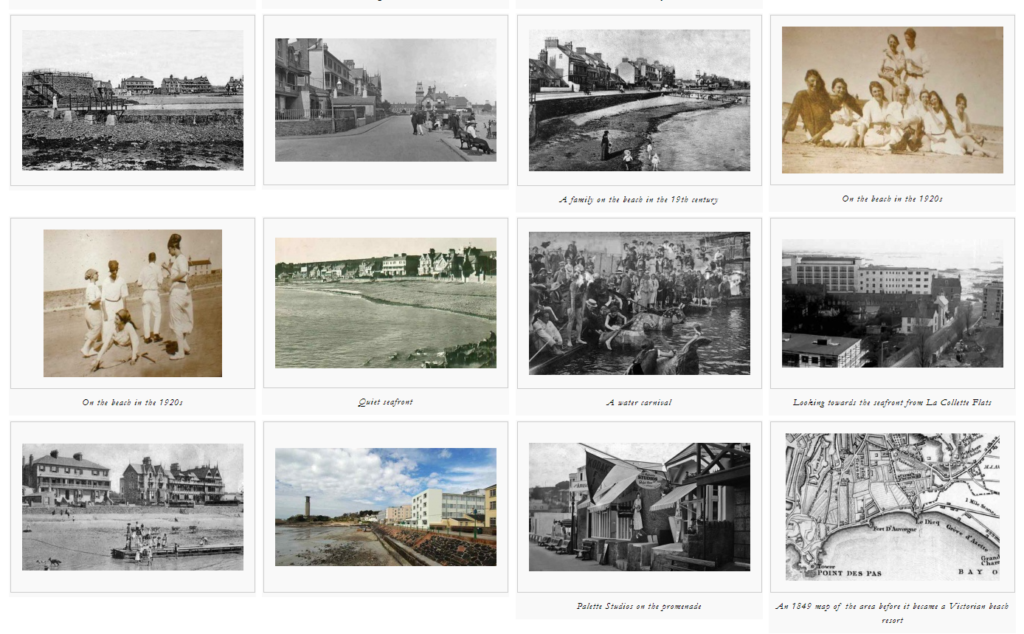
You may need / want to experiment with archival images of Jersey to incorporate into photomontages or other creative processes…
Remember to credit the artist / source
Follow the 10 Step Process and create multiple blog posts for each unit to ensure you tackle all Assessment Objectives thoroughly :
- Mood-board, definition and introduction (AO1)
- Mind-map of ideas (AO1)
- Artist References / Case Studies (must include image analysis) (AO1)
- Photo-shoot Action Plan (AO3)
- Multiple Photoshoots + contact sheets (AO3)
- Image Selection, sub selection, review and refine ideas (AO2)
- Image Editing/ manipulation / experimentation (AO2)
- Presentation of final outcomes (AO4)
- Compare and contrast your work to your artist reference(AO1)
- Evaluation and Critique (AO1+AO4)
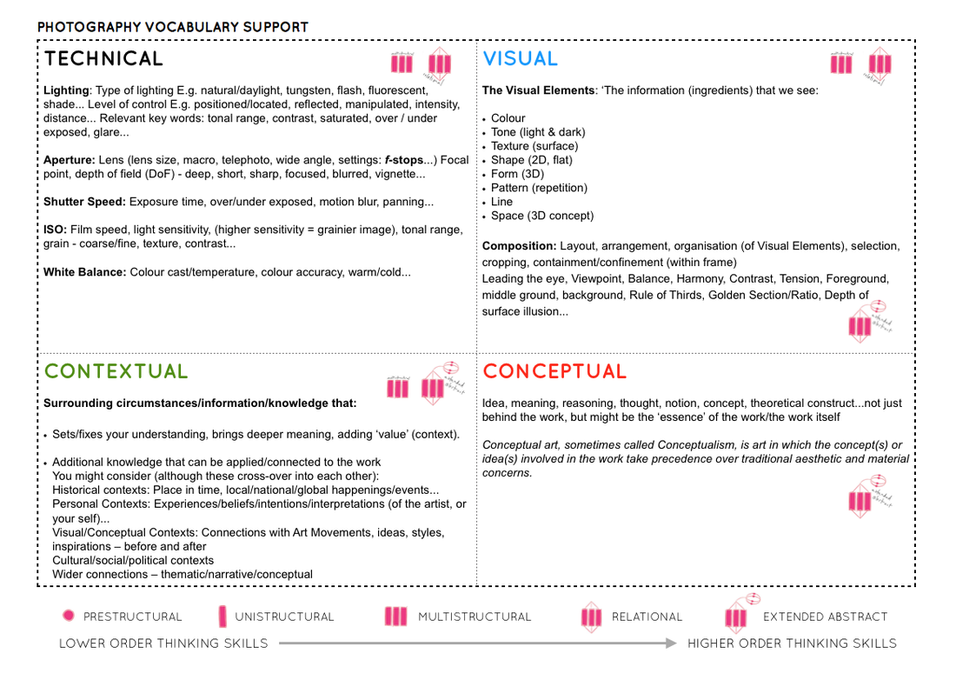
Final Outcomes for Anthropocene + Landscapes
You must edit and save / export a range of images for printing to the PRINT FOLDER found here by ….
- Natural Landscape Photos 1-3 images
- Urban + industrial Photos 1-3 images
- Anthropocene 1-3 images
Remember to include a range of sizes
A3 / A4 / A5 and black and white images too
File Handling and printing...
- Remember when EXPORTING from Lightroom you must adjust the file size to 1000 pixels on the Short edge for “blog-friendly” images (JPEGS)
- BUT…for editing and printing when EXPORTING from Lightroom you must adjust the file size to Short edge for “high resolution” images (JPEGS) like this…

- A5 Short Edge = 14.8 cm
- A4 Short Edge = 21.0 cm
- A3 Short Edge =29.7 cm
This will ensure you have the correct ASPECT RATIO
For a combination of images, or square format images you use the ADOBE PHOTOSHOP > NEW DOCUMENT + PRINT PRESETS on to help arrange images on the correct size page (A3, A4, A5)
You can do this using Photoshop, Set up the page sizes as templates and import images into each template, then you can see for themselves how well they fit… but remember to add an extra 6mm for bleed (3mm on each side of the page) to the original templates. i.e. A4 = 297mm x 210 but the template size for this would be 303mm x 216mm.
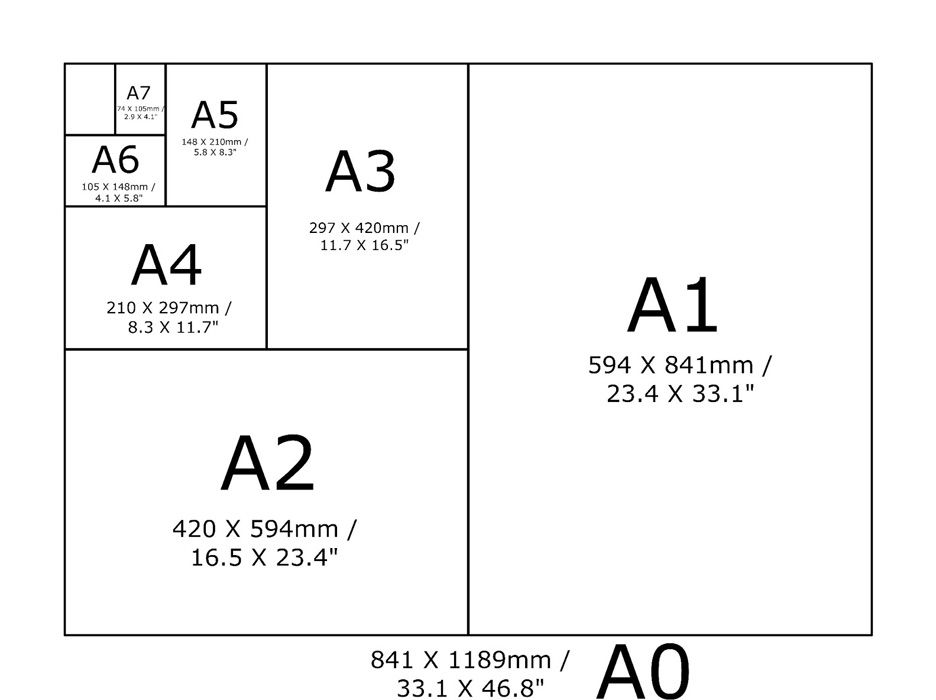
Mounting and framing final images
Making a Virtual Gallery in Photoshop
Download an empty gallery file…then insert your images and palce them on the walls. Adjust the persepctive, size and shape using CTRL T (free transform) You can also add things like a drop shadow to make the image look more realistic…
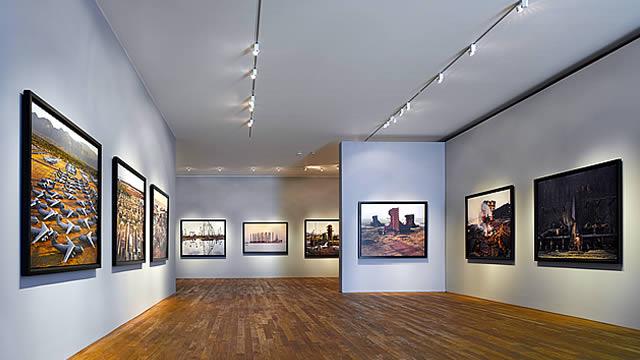

…or using online software
How I did it:
Step 1: Go to www.artsteps.com
Step 2: Sign in / up.
Step 3: Create.
Step 4: Create your own location or choose a template.
Step 5: Upload your images, put them in your exhibition, name it and give it a description.
Step 6: Present / view your Exhibition.
YOUR FINAL BLOG POST SHOULD CLEARLY SHOW 3-5 POSSIBLE FINAL OUTCOMES , INCLUDING YOUR PRESENTATION METHOD
- sequencing of images
- grouping of images -grids , triptych, diptych, dioramas, predellas
- sculptural / multi-media approaches
- framing methods
- blog (show examples of frames / borders + process)
- clarity of final outcomes—which images are your final outcomes?
- coursework round – up and evaluation

